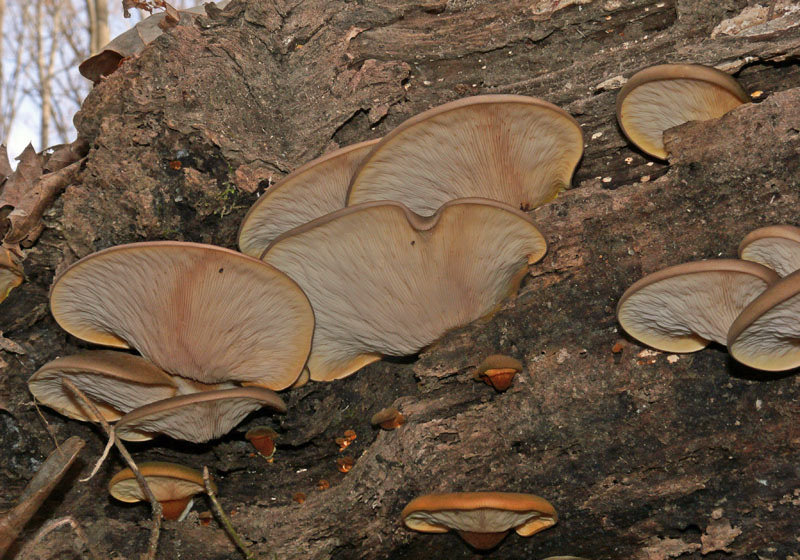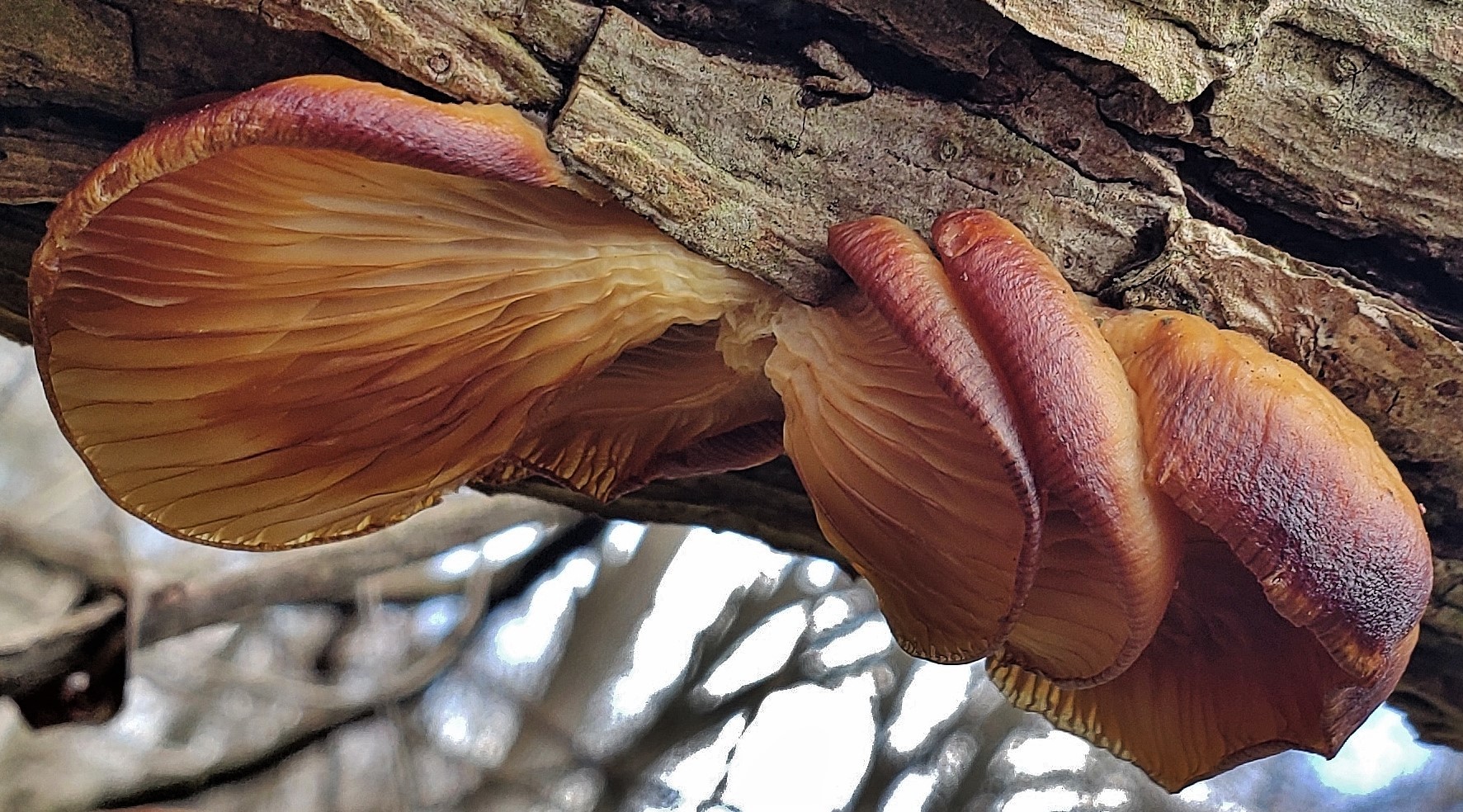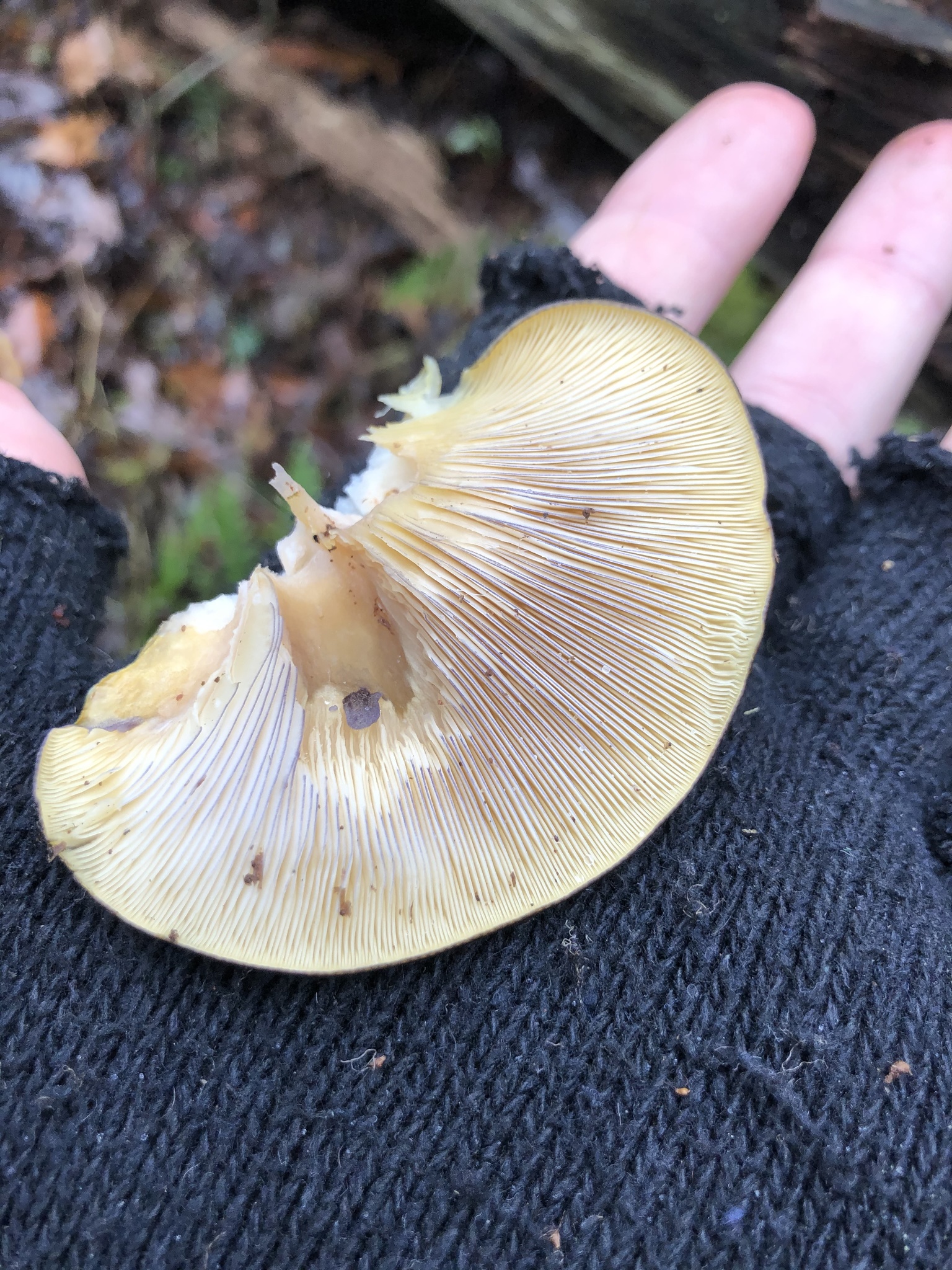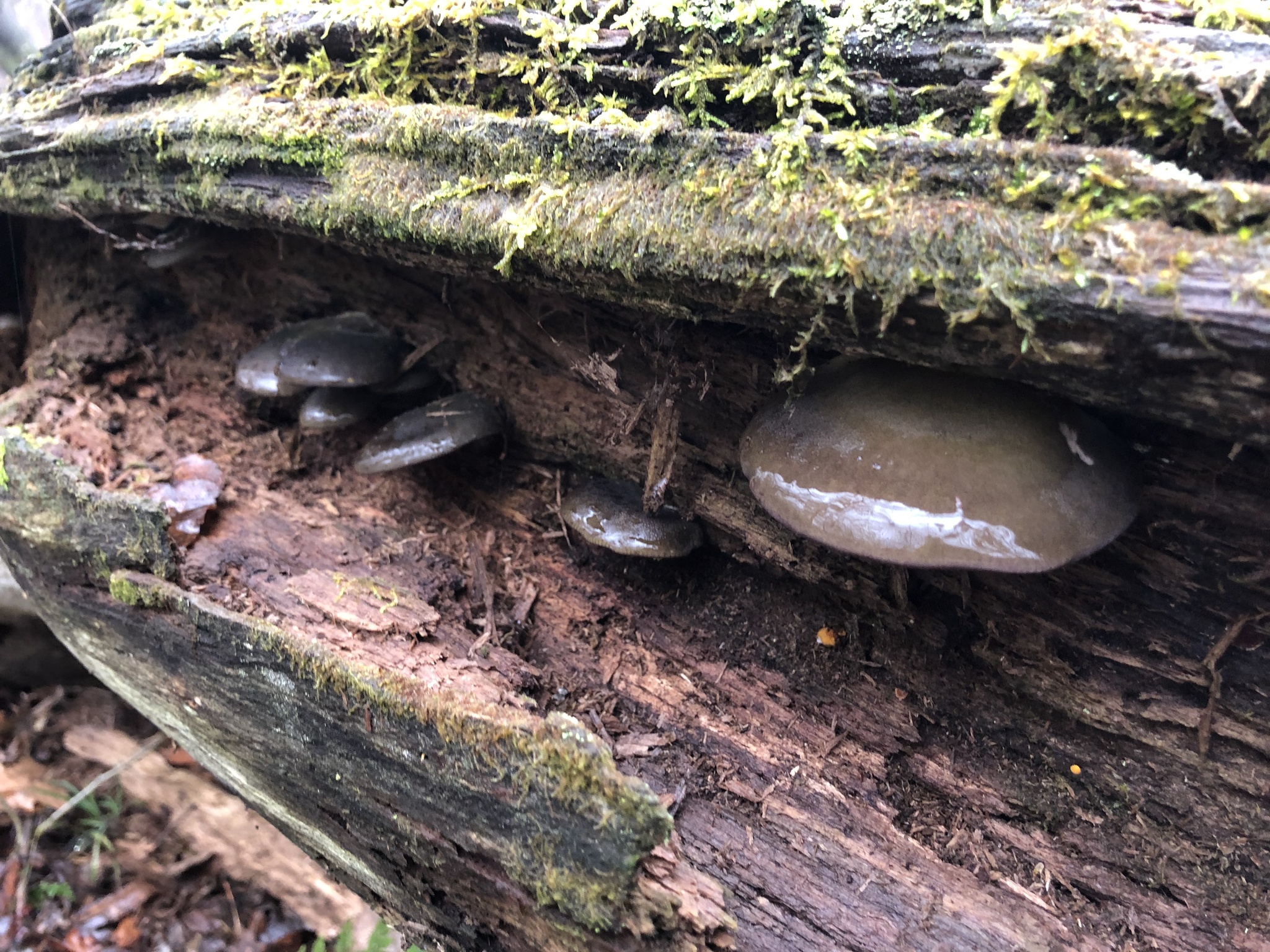Map Snapshot







17 Records
Status
Most often does not appear until after the first hard frost in fall. Many mushroomers consider its appearance a signal the end of the season is in sight (J. Solem, pers. comm.).
Description
Cap: Highly variable color from yellowish-green or dark olive to brown usually with purplish tints; kidney to fan-shaped; slimy when wet; margin incurved; flesh white/thick. Gills: Bright ochre to whitish; attached to decurrent; close. Stalk: Lateral attachment; stalk stubby if present; whitish/yellowish/brownish; hairy, especially at attachment poin (J. Solem, pers. comm.).
Where To Find
Groups, overlapping clusters on dead hardwood stumps, logs, and sticks, occasionally on conifer (J. Solem, pers. comm.).
Seasonality Snapshot
Source: Wikipedia
| Sarcomyxa serotina | |
|---|---|

| |
| Scientific classification | |
| Domain: | Eukaryota |
| Kingdom: | Fungi |
| Division: | Basidiomycota |
| Class: | Agaricomycetes |
| Order: | Agaricales |
| Family: | Sarcomyxaceae |
| Genus: | Sarcomyxa |
| Species: | S. serotina
|
| Binomial name | |
| Sarcomyxa serotina | |
| Synonyms | |
Sarcomyxa serotina is a species of fungus in the family Sarcomyxaceae. Its recommended English name in the UK is olive oysterling.[1] In North America it is known as late fall oyster or late oyster mushroom.[2] Fruit bodies grow as greenish, overlapping fan- or oyster-shaped caps on the wood of both coniferous and deciduous trees. The gills on the underside are closely spaced, bright orange yellow, and have an adnate attachment to the stipe. It produces a yellow spore print; spores are smooth, amyloid, and measure 4–6 by 1–2 μm.[3]
The species is considered to be either edible or inedible, with the taste ranging from mild to bitter. Research has revealed that two separate species exist, Sarcomyxa serotina and Sarcomyxa edulis (unknown in Europe).[4] The latter is cultivated for food in China and Japan.[5]
References
[edit]| Sarcomyxa serotina | |
|---|---|
| Gills on hymenium | |
| Hymenium is adnate or decurrent | |
| Stipe is bare or lacks a stipe | |
| Spore print is yellow | |
| Ecology is saprotrophic | |
| Edibility is edible | |
- ^ Holden L. "English names for fungi". British Mycological Society. Retrieved 2022-10-10.
- ^ Arora, David (1986). Mushrooms demystified: a comprehensive guide to the fleshy fungi (Second ed.). Berkeley: Ten Speed Press. ISBN 978-0-89815-169-5.
- ^ McKnight KH. (1998). A Field Guide to Mushrooms: North America. Houghton Mifflin Harcourt. p. 180. ISBN 0-395-91090-0.
- ^ Dai Y, Niemelä T, Qin G (2003). "Changbai wood-rotting fungi 14. A new pleurotoid species Panellus edulis". Annales Botanici Fennici. 40 (2): 107–112.
{{cite journal}}: CS1 maint: multiple names: authors list (link) - ^ Tian F, Li C, Li Y (2021). "Genomic analysis of Sarcomyxa edulis reveals the basis of its medicinal properties and evolutionary relationships". Front. Microbiol. 12: 652324. doi:10.3389/fmicb.2021.652324. PMC 8281127. PMID 34276589.
{{cite journal}}: CS1 maint: multiple names: authors list (link)













